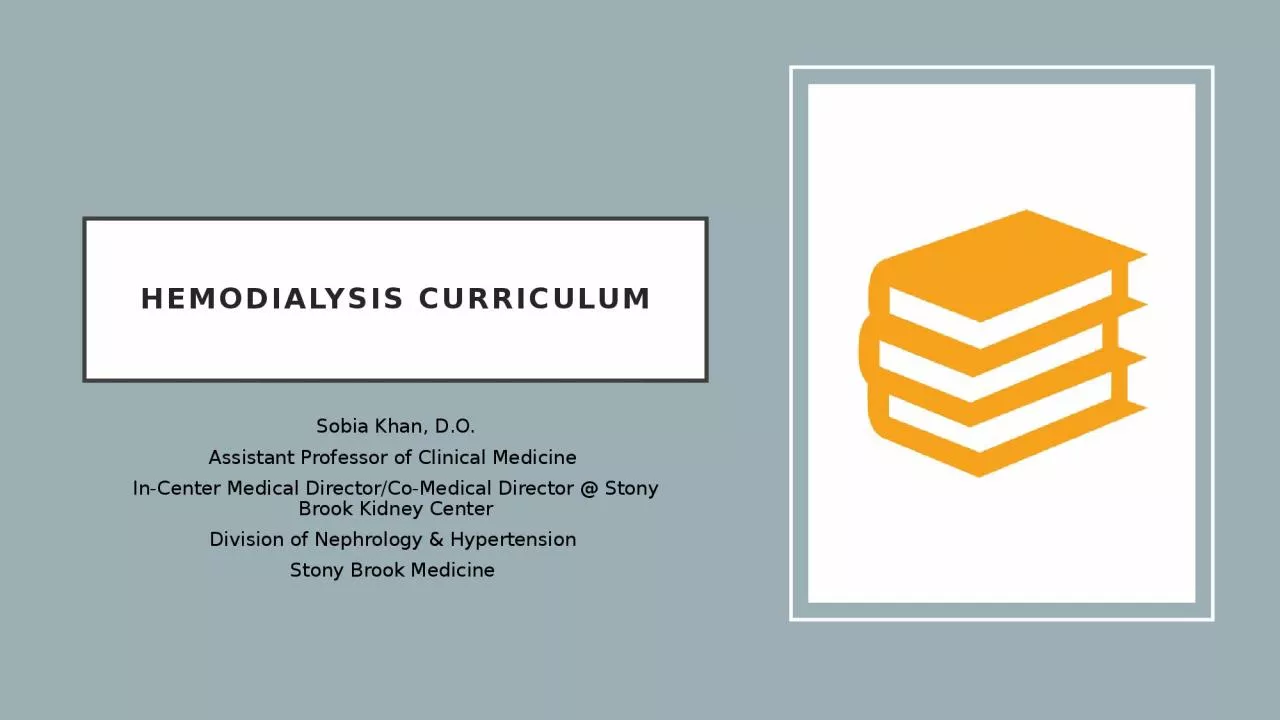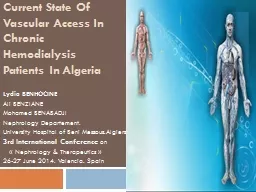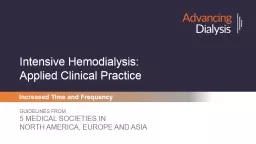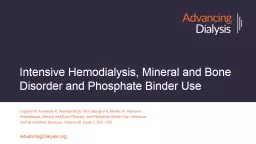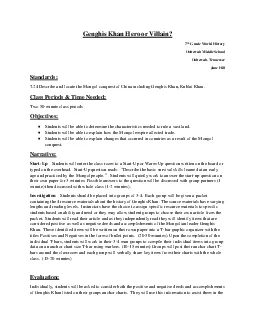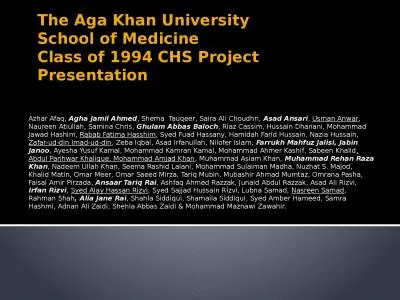PPT-Hemodialysis Curriculum Sobia Khan, D.O.
Author : sophia | Published Date : 2024-01-29
Assistant Professor of Clinical Medicine InCenter Medical DirectorCoMedical Director Stony Brook Kidney Center Division of Nephrology amp Hypertension Stony Brook
Presentation Embed Code
Download Presentation
Download Presentation The PPT/PDF document "Hemodialysis Curriculum Sobia Khan, D.O." is the property of its rightful owner. Permission is granted to download and print the materials on this website for personal, non-commercial use only, and to display it on your personal computer provided you do not modify the materials and that you retain all copyright notices contained in the materials. By downloading content from our website, you accept the terms of this agreement.
Hemodialysis Curriculum Sobia Khan, D.O.: Transcript
Download Rules Of Document
"Hemodialysis Curriculum Sobia Khan, D.O."The content belongs to its owner. You may download and print it for personal use, without modification, and keep all copyright notices. By downloading, you agree to these terms.
Related Documents

